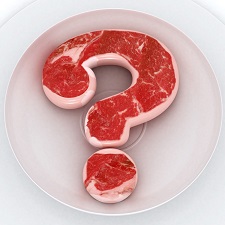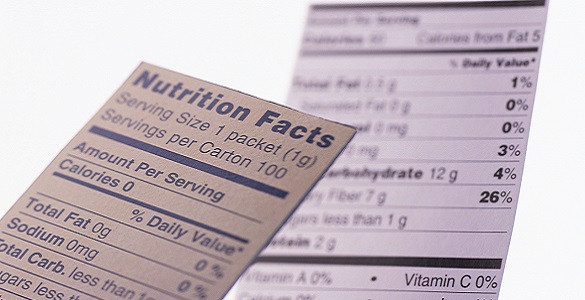I realize that this seems to be a no-brainer, but I am uncomfortable with how many people do not understand what is going into their bodies. If you are going to eat packaged foods, please, for goodness sake, take a moment to read what is in it!
Time and time again, people complain to me that they watch what they eat, but still can’t lose weight…
“Ok,” I say, “let’s go through your diet and take a look.”
Sure enough, packaged and processed junk that does not belong in the human body is marketed as healthy and even the most conscious among us, grab for it. Every day, millions of Americans eat items that look like food, but are merely “food-like.” All of the nutrients have been eliminated, and toxic junk has been added to “preserve freshness” or “enhance flavor.” As if they are doing us some kind of favor…
Serving size and servings per package: before you go any further, check to be sure that you are accurately assessing nutritional information. For example, a serving of boxed cereal is ¾ of a cup. Do yourself a favor and grab a measuring cup, pour out ¾ and put it in the bowl you are going to eat from. Does that look like the size you normally eat? One of my favorites is Gatorade or other sports drinks and soda. The bottle we grab at the convenience store is 2.5 servings per container. How much do you normally drink? Less than half the bottle? Didn’t think so… Multiply the nutrition facts by 2.5, there you have it.
Fat: Not the evil we were taught to believe unless its “trans-fats”. This is the yucky stuff that was developed in a factory using low quality oils (read rancid) that have been hydrogenated (extra hydrogen was added.) Companies are now required to label it, because it is SO dangerous, but they can get away with saying it has zero if it is less than one gram per serving size. Note serving size and ingredient list! No amount of Trans Fat is ok! Saturated fat depends on what it is derived from. Coconut, yes! Animal product…not so much. Unsaturated fat, also be aware…soybean, sunflower, safflower, and corn oils can all be toxic to your body in the manufactured form.
Cholesterol: Also not the bad guy in the big picture of heart disease. Animals produce it and that means you produce it. Trigycerides in your system and Trans Fats in the diet, increase production. If it is a plant based food, there is no Cholesterol, so it will always say zero. That doesn’t mean the food is healthy to eat, however. See a clinical nutritionist for details if Cholesterol is a concern for you.
Sodium: Holy moly, salt is convenient, and cheap, and therefore in all packaged foods. The salt used in preserving packaged items is the least valuable to your body because it is bleached and processed. Although there are questions about the relationship between high blood pressure and sodium intake, it is always wise to err on the side of caution and steer clear of high sodium foods.
Potassium: An important electrolyte that is required in the human body, along with many others, to help conduct the electrical charges of the heart and nervous system, and control blood pressure. (It is found most widely in fresh fruits and vegetables, which obviously won’t have a label.) Of course, since it is important to keep a vital ratio of potassium and sodium, it makes sense that the current labeling laws would include it.
Carbohydrate: You are looking for a sugar to fiber ratio here. Preferably, more fiber and less sugar will ensure a good glycemic index. Complex carbohydrates break down into sugar, so the protein and fiber content is very important! Sugar, in excess, in any form, can cause problems. Americans typically eat 10 times more than the human body needs on any given day. And we wonder why we are fat? A good rule of thumb is any serving that has more than 10-15 grams of sugar should be avoided. The only exception to this would be directly after intense or long duration bout of exercise. P.S. sugar is in everything!
 Protein: Let’s just say that for the most part, protein is your friend. It is rare to over-consume it from packaged foods. Steer clear of soy based protein, it has most likely been genetically modified, and the fillers are from animal parts that you just don’t want to ingest…EW! The protein to carbohydrate ratio is important for those trying to manage insulin response, and because protein is the building blocks of healthy cells, it’s definitely a winner at dinner. Just check the ingredients to see where the heck the protein is coming from.
Protein: Let’s just say that for the most part, protein is your friend. It is rare to over-consume it from packaged foods. Steer clear of soy based protein, it has most likely been genetically modified, and the fillers are from animal parts that you just don’t want to ingest…EW! The protein to carbohydrate ratio is important for those trying to manage insulin response, and because protein is the building blocks of healthy cells, it’s definitely a winner at dinner. Just check the ingredients to see where the heck the protein is coming from.
The vitamin percentages: The government is still using outdated RDA requirements based on a 2000 calorie a day diet. Honestly? There is no proof that this is accurate information, or that the nutrition is actually bio-available. Processing itself kills most of the nutrition, but if there is something you need to fortify or avoid, then check the label and act accordingly.
Ingredients: Here is the motherload of information you need to be aware of. Read it, and weep. Can you pronounce it? The amount of poison that can enter your body, legally, is astounding. Thank God, for the liver, and the kidneys, that have to sort through all that stuff and get it to a safe place (your fat cells), so you don’t die immediately. Packaged foods need to last a long time on a shelf and still taste good. Billions of dollars have been spent to ensure that the consumer has a pleasant taste experience upon ingesting, so companies have developed thousands of ingredients that ensure you buy the product again and again. I challenge each one of you that read this information, to take some time to google search the stuff you can’t pronounce. Better yet, have your kids do it!
Bottom line: real food should perish. It was once alive, that is what makes it food. Don’t be fooled by the package that says it’s healthy. Do your research. Know what you are eating and how much. Be responsible for knowing, because the government and the large food industries, would probably prefer you just dig right in!




















